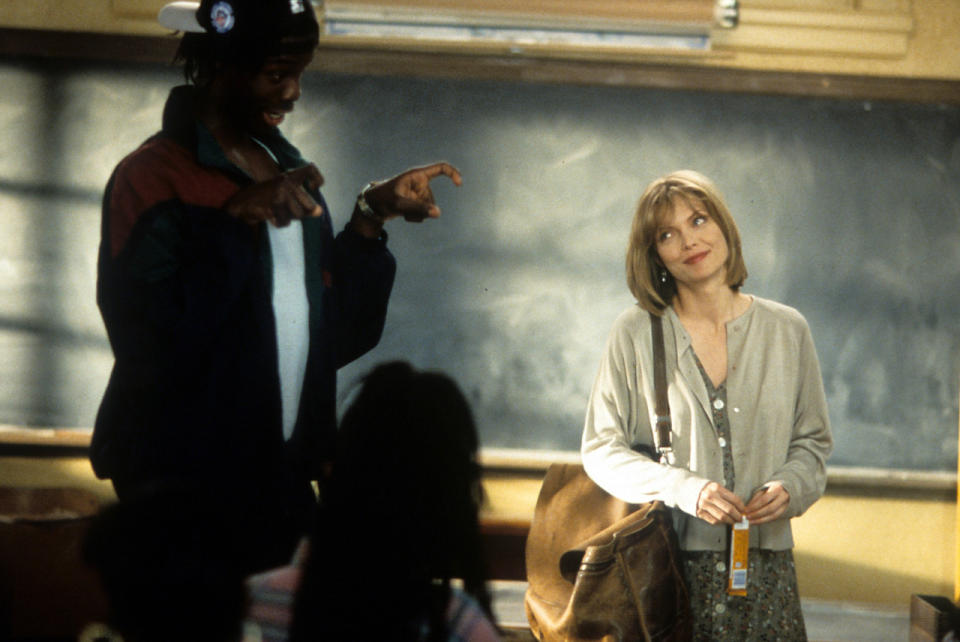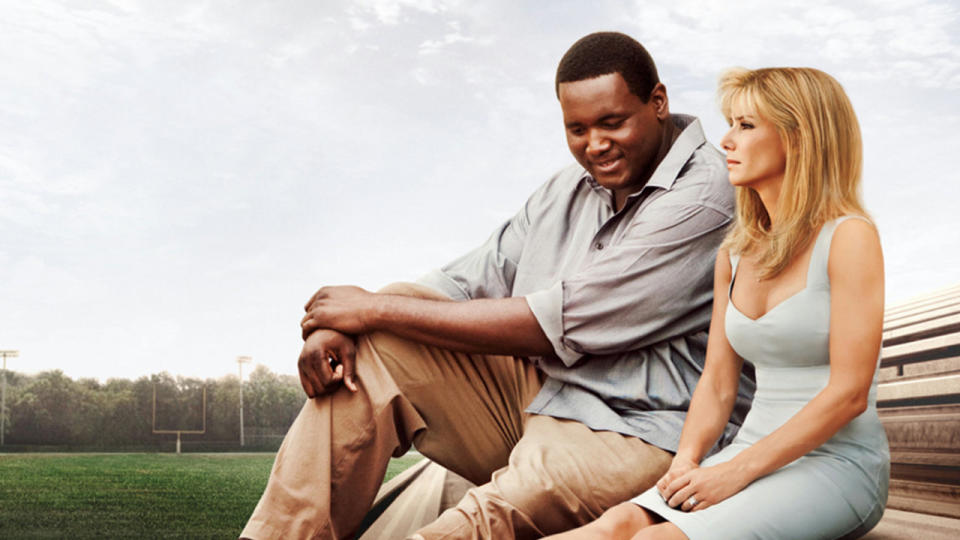Six times Hollywood rewrote history by inserting a 'white saviour'
If you turn up to watch a Bruce Lee biopic, you might be forgiven for expecting the Hong Kong martial arts legend to be the main attraction. Not so in new movie ‘Birth of the Dragon’, which has drawn complaints from Lee’s fans that it sidelines the legendary star in favour of a fictional white guy named Steve.
Steve McKee, who’s said to be loosely based on the legendary Hollywood icon Steve McQueen, is played by white American actor Billy Magnussen in George Nolfi’s film, which debuted at the Toronto film festival last month. According to the movie, McKee witnessed the legendary fight between Lee and purist kung fu master Wong Jack Man in 1965 in San Francisco. In reality, McQueen and Lee didn’t even meet until later in the 1960s.
It’s not the first time Hollywood has shoehorned caucasian face into stories where they do not belong. Here are six more times the ‘white saviour’ turned up to save the day - and had audiences groaning into their popcorn.

The Help
You’d think a movie about the 1960s battle for civil rights in the deep south, especially one titled ‘The Help’, might actually be about the black maids battling to keep their jobs and save their families from destitution in the face of appalling prejudice. But no, Tate Taylor’s Oscar-winning drama centres on a white woman, Emma Stone’s Eugenia “Skeeter” Phelan, and her fight to improve the lives of the community’s underpaid black servants and nannies.
Despite being nominated for best actress at the 2012 Academy Awards, Viola Davis’ Aibileen Clark gets less screen time than half a dozen of the white actresses, from Bryce Dallas Howard’s excrement pie-eating Hilly to Jessica Chastain’s kindly Celia, who make up the vast proportion of the movie’s cast. Octavia Spencer won best supporting actress for her turn as outspoken maid Minny Jackson, creator of that famous “chocolate” pie, so the largely white Academy were obviously happy with what they saw. Not so the cheeky graphic designer who Photoshopped a poster for Taylor’s film, retooling it with the rather more honest title ‘White People Solve Racism’.

The Last Samurai
The story of the 1877 Satsuma Rebellion, in which disaffected samurai rebelled against the new Japanese imperial government just a few years into the Meiji era, is certainly a fitting one for transfer to the big screen. But who’s this white guy saving the lives of the samurais’ proud and honourable leader, before later persuading the emperor of Japan not to sign an important trade agreement that might have led to more western interference in the land of the rising sun? Why it’s Tom Cruise!
The Top Gun star plays the entirely fictional former US Army captain Nathan Algren, who begins the movie as a disgruntled alcoholic but by the end finds redemption and a new lease of life after immersing himself in samurai culture. Algren was loosely based on the French army officer Jules Brunet, who trained and fought with anti-Imperial forces in an earlier era in Japanese history, the Boshin War of 1868-69. But there is no evidence Brunet had any influence at all on the young Meiji Emperor, let alone that he helped turn back the tide of westernisation in Japan. The very opposite in fact, as the new ruler of Japan helped usher in an unprecedented period of modernisation that saw the old pre-industrial feudal Japan, and the samurai who symbolised it, entirely swept away by the time of his death in 1912.
- Han Solo Film: Tessa Thompson and Zoe Kravitz Among Those Testing for Female Lead
- Almost 60% of British films from the last decade feature no black actors
- Asian Films Looking to Cast More Hollywood Names

Dances With Wolves
The American cavalry may have ridden their way across the great plains, destroying the lifestyles and culture of the myriad Native American tribes who dwelled there as part of the United States’ endless, unrelenting mission to achieve manifest destiny. But at least one white guy was prepared to stand up for the poor downtrodden Sioux - and that man’s name was Kevin Costner.
Starring as the (once again) entirely fictional Lieutenant John J Dunbar, aka ‘Dances with Wolves’, Costner warns the local tribespeople of the growing white threat, helps defend them against a Pawnee raid and is even immersed into the native culture after alerting his new friends to a nearby migrating herd of buffalo. An all-round great guy then, or perhaps the completely made-up child of white guilt, depending on how you look at it.

Amistad
Steven Spielberg’s 1997 historical drama tells the tale of an African slave revolt on board a Cuban ship that was subsequently sailed into US waters, and became the subject of a major legal battle. But the key characters are not the Mende-speaking people who mounted the revolt, who are rendered virtually mute. This is because producers decided US audiences did not like movies with subtitles, and left most of the scenes involving black castmembers on the cutting room floor. Instead our heroes are the white lawyers and politicians battling bravely to save the poor Africans from a life of servitude.
The movie does feature one high-profile black role, Morgan Freeman’s Theodore Joadson, who aides lawyer Roger Sherman Baldwin (Matthew McConaughey) in his efforts, but the character was entirely invented for the purposes of the movie. Historian Eric Foner, a professor of history at Columbia University, has also pointed out that US courts were far from receptive to the cause of abolitionism during the mid-19th century, and questioned Spielberg’s assertion that the ‘Amistad’ affair represented a major staging post on the road to the outlawing of slavery.

Dangerous Minds
Michelle Pfeiffer stars as Nice White Lady LouAnne Johnson in the 1995 melodrama, which centres on an ex-machine who gains a teaching job at a tough inner-city school. The real Johnson did manage to win over and engage her reluctant students by diverting from the official curriculum, largely by using rap lyrics in place of poetry. But John N Smith’s poorly-received adaptation of Johnson’s book, ‘My Posse Don’t Do Homework’ inexplicably had Pfeiffer using Bob Dylan songs and the Dylan Thomas poem ‘Do Not Go Gentle Into That Good Night’ to really cut through the fusty veneer of the material sanctioned by the local education board.
Hollywood also made sure almost all the kids in Pfeiffer’s class were from black and Latino backgrounds, whereas in reality there were almost equal numbers of poor white children present. Finally, producers added a sensationalised, entirely fictional denouement in which one of Johnson’s favourite pupils, Emilio Ramirez, is killed in a gang fight after the school’s stuffy headmaster ignores his plea for help. The real Emilio joined the US Marines and eventually settled down to a happy family life in California.

The Blind Side
The story of black teenager Michael Oher’s rise from homeless poverty to the ranks of the NFL was first told in Michael Lewis’ 2006 book ‘The Blind Side: Evolution Of A Game’. But when it came to the film adaptation, Hollywood chose to focus almost wholly on Oher’s rescue from the streets by a wholesome, rich white Mississipian family. Once again, the biopic’s subject is sidelined almost entirely in his own story, and you would think his remarkable rise to fame and fortune - Oher remains a regular first team offensive tackle for the NFL’s Carolina Panthers and recently signed a new three-year contract - was almost entirely down to the kindness and encouragement of the angelic Tuohy family. Sandra Bullock won the best actress Oscar in 2010 for her turn as fearsome Memphis matriarch Leigh Anne Tuohy, but little has been heard since of young Quentin Aaron, who played Oher.
Image credits: Getty/Warner Bros/Dreamworks Pictures

 Yahoo Movies
Yahoo Movies 